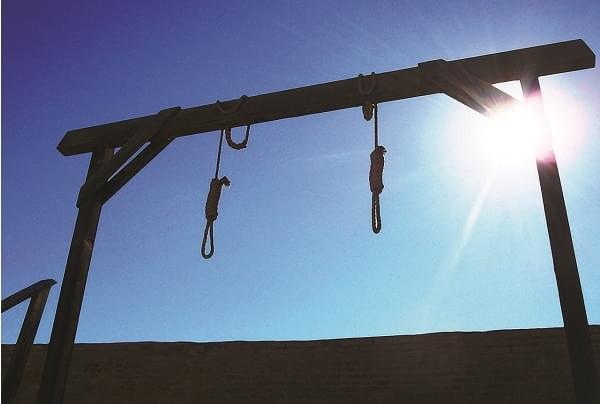The Bar
Reflections on the Death Penalty
Zoya Khan
Nov 28, 2012, 02:03 PM | Updated Apr 29, 2016, 02:02 PM IST
Save & read from anywhere!
Bookmark stories for easy access on any device or the Swarajya app.


Criminal Justice System in woven into every society’s fabric to maintain social order, to extend protection and to act as a deterrent to unlawful behaviour. As the pioneer of the drafting of the Constitution of United States, James Maddison said: “if men were such angels no government would be necessary .”
However, in the light of the recent execution of Ajmal Kasab, a plethora of opinions have come to the fore; from the sombre diginty of the victims’ families and that of the security personnel to the practiced rhetoric of the usual sabre rattlers. The shrillness of the perfunctory call for abrogation of capital punishment necessitates a looking at the precedent that has shaped the sentencing policy of this country. Law, is as much interpretational as it is procedural. The statutes of any law laid down render themselves to being challenged in the Apex court which is the highest authority in the country. The call, for establishing uniform guidelines for a matter as serious as death sentence, is made ever so harder by the non-uniformity of circumstance(s) of each case.
The Adversarial System adopted in India enunciates fair trial. To use a broad brush technique, the sentencing depends on the evidence the court given and it decides if the circumstances of the crime were Aggravating or Extenuating/Mitigating. The Constitutional validity of death penalty for murder as provide in Section 302 of IPC and the sentencing procedure as laid down in Section 354(3) of CrPC, 1973, was questioned in the landmark case of (Bachan Singh vs State Of Punjab on 9 May, 1980. Equivalent citations: AIR 1980 SC 898, 1980 CriLJ 636, 1982 (1) SCALE 713) provides us with the elaborate definition of Aggravating and Mitigating circumstances and also sets the precedent by defining what has come to be commonly known as the “rarest of rare”, principle followed in sentencing a convict to death. Generally accepted enumeration of Aggravating circumstances are as under:
Aggravating circumstances: A Court may, however, in the following cases impose the penalty of death in its discretion:
(a) if the murder has been committed after previous planning and involves extreme brutality; or
(b) if the murder involves exceptional depravity; or
(c) if. the murder is of a member of any of the armed forces of the Union or of a member of any police force or of any public servant and was committed –
(i) while such member or public servant was on duty; or
(ii) in consequence of anything done or attempted to be done by such member or public servant in the lawful discharge of his duty as such member or public servant whether at the time of murder he was such member or public servant, as the case may be, or had ceased to be such member or public servant; or
(d) if the murder is of a person who had acted in the lawful discharge of his duty under Section 43 of the CrPC, 1973, or who had rendered assistance to a Magistrate or a police officer demanding his aid or requiring his assistance under Section 37 and Section 129 of the said Code.
The murderous actions of the lone surviving terrorist in the 26/11 Mumbai attack fits the definition of “exceptional depravity” to the T. The lack of clear legislative guidelines has given way to the frequent call for abolition of death sentence in that it is ultra vires to Articles 14,19 and 21. The clear procedural guidelines laid down for a trial, the exhaustive application of law and the critical examination of the wealth of evidence presented before it gives weight to judicial discretion. The concept of justice also requires that sentence is not disproportionate to the crime committed.
Death allows for no review; it is imperative that fallibility and vagarious nature of evidence is given due consideration and also to the correct application of procedures during the trial.
The well entrenched positions of Abolition and Retention have been putting forward their case ever so often and their antagonism, very tangible. If we cut through emotional pith, we arrive at the substance, which is, how do we provide justice to the victim(s) of a inherently vicious crime? Social denunciation and revulsion against crimes of unspeakable brutality, act as a deterrent. (It is impossible to quantify this deterrence as many competing dynamics are at play in different societies.)
The ultimate aim of law is to provide protection to the innocent, against perpetrators. “Law should not sit limply, while those who defy it go free and those who seek protection lose hope”. (Jennison v Baker (1972) 1 All ER 997)
One can only hope that those who seek a blanket ban on death sentence do temper their arguments on the merits of each case. The hanging of Ajmal Amir Kasab, is case where they cannot hide behind the covering of Art 14, 19 and 21 and the constitutionality of the legislation. The acts of mindless violence demands reprobation.
“Everything has been said already, but no one listens, we must always begin again.” ~ Andre Gide.





